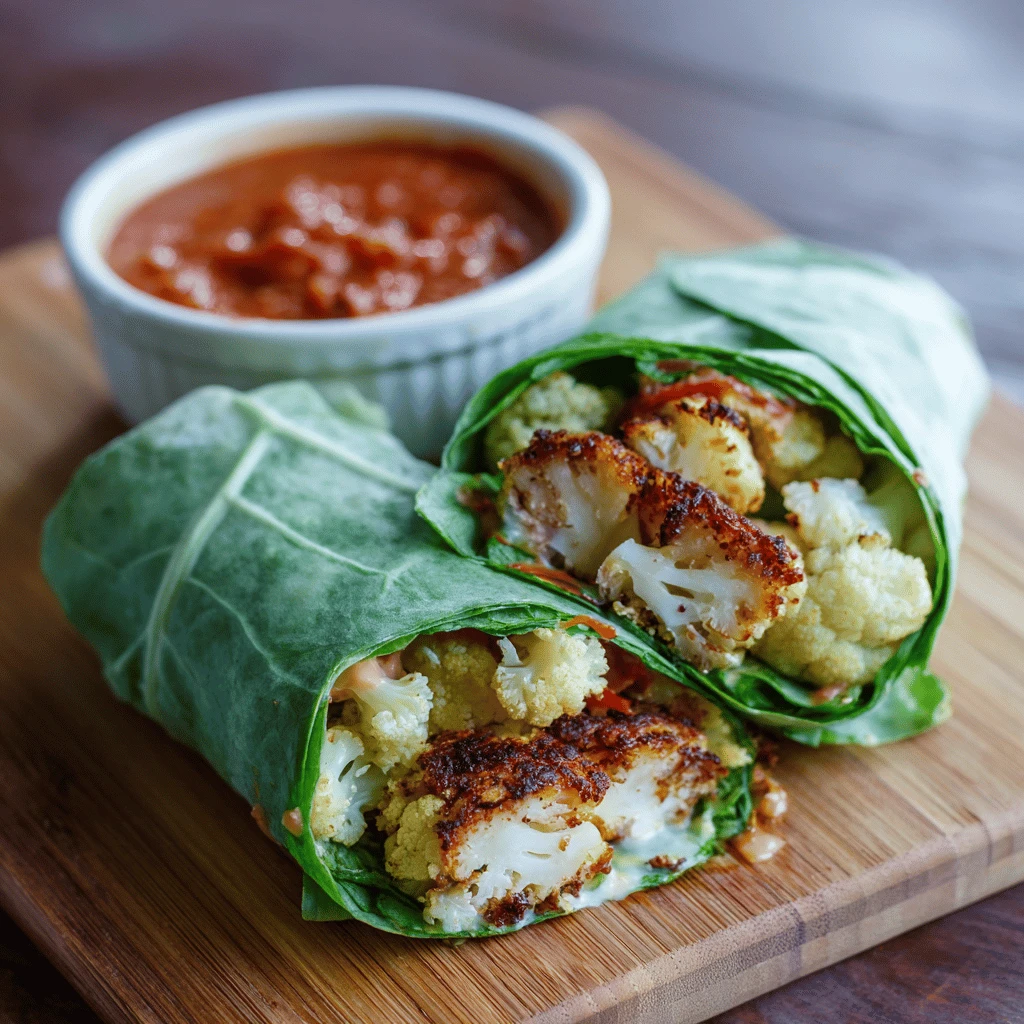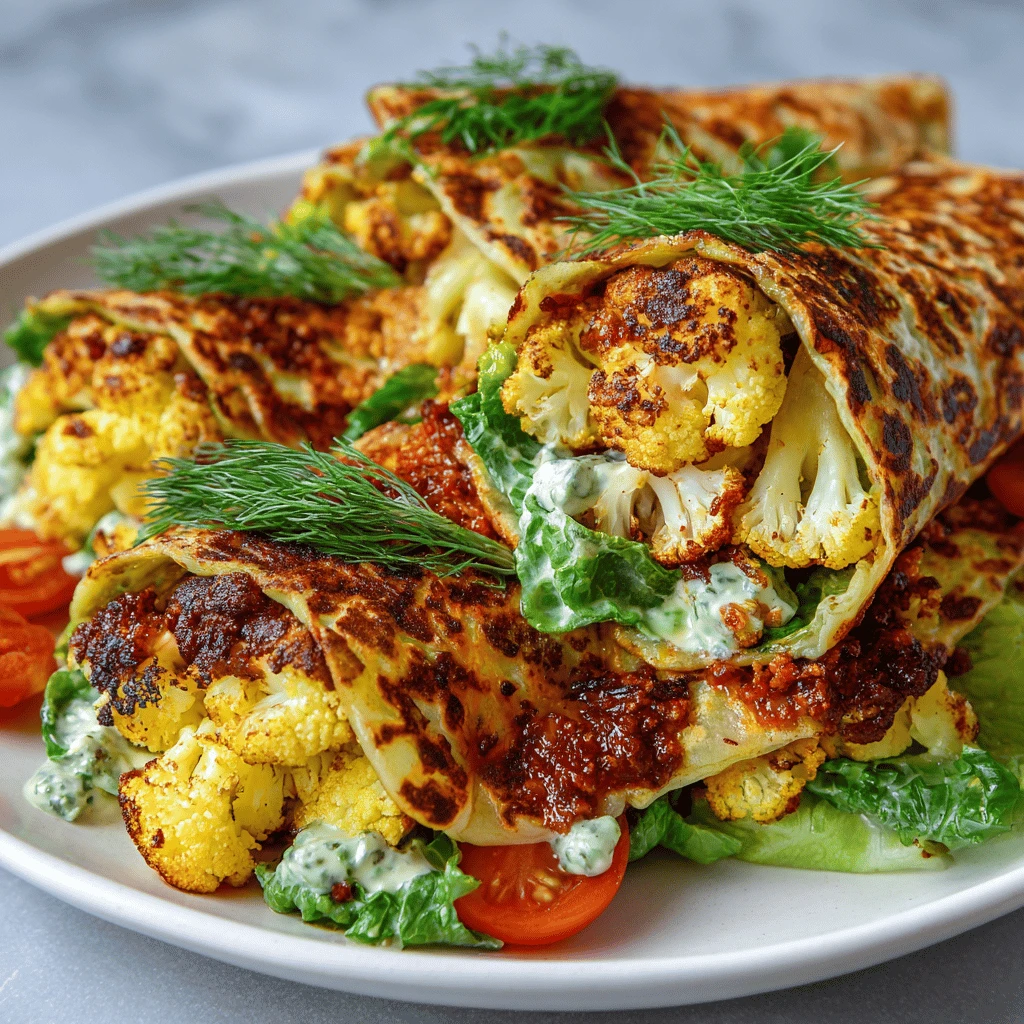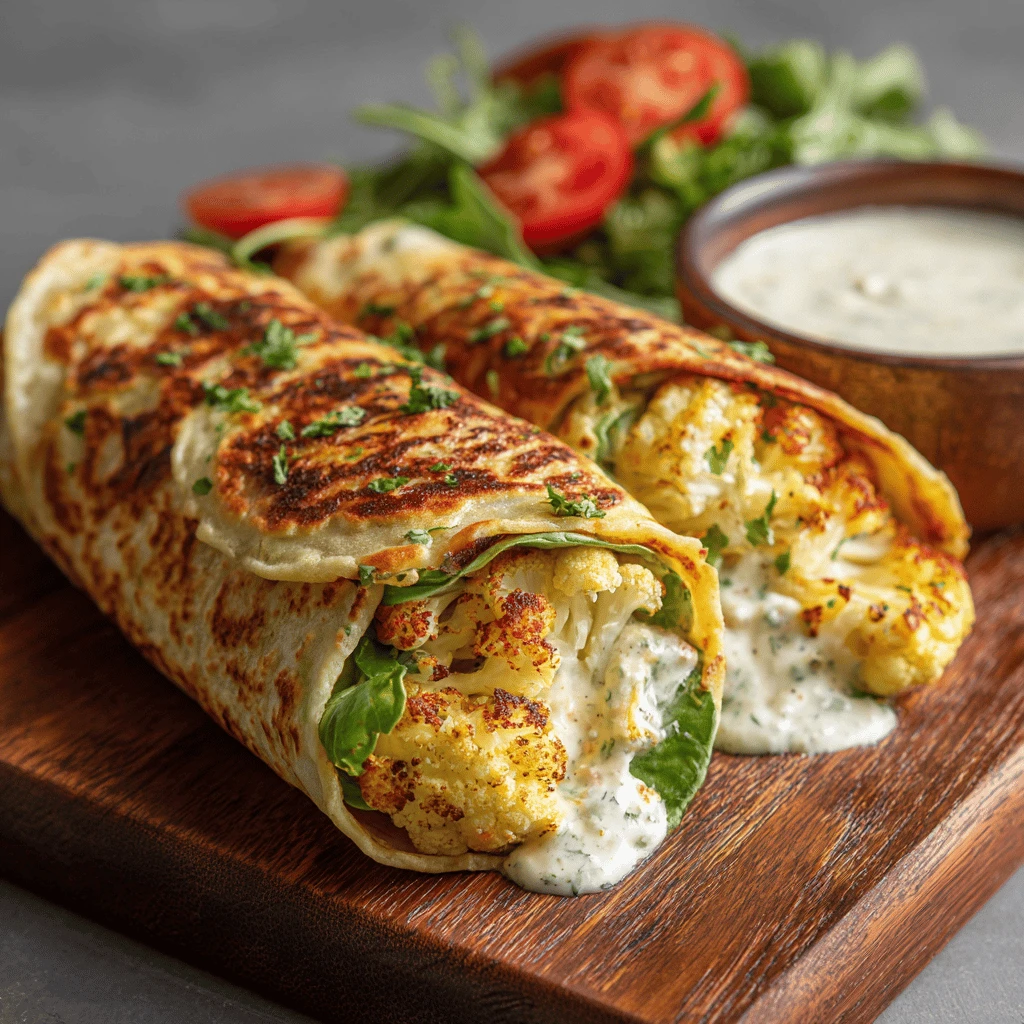For Dinner Low Carb Cauliflower Wrap
Cauliflower wraps are a fantastic low-carb alternative to traditional tortillas or bread, offering a versatile and healthy base for a variety of fillings. Whether you’re following a ketogenic diet, managing your carbohydrate intake, or simply looking for a nutritious and delicious meal option, cauliflower wraps are a flavorful and satisfying choice. This guide will walk you through everything you need to know about creating perfect cauliflower wraps for dinner, from preparation to recipe ideas.
Understanding Cauliflower Wraps: A Low-Carb Revolution
The appeal of cauliflower wraps lies in their simplicity and nutritional benefits. Cauliflower is a cruciferous vegetable packed with vitamins, minerals, and fiber. When transformed into a wrap, it becomes a low-carb, gluten-free alternative that doesn’t compromise on taste or texture.
Why Choose Cauliflower Wraps?
- Low in Carbohydrates: Ideal for those following low-carb or ketogenic diets.
- Gluten-Free: A great option for individuals with gluten sensitivities or celiac disease.
- Nutrient-Rich: Cauliflower is a good source of vitamins C and K, as well as fiber and antioxidants.
- Versatile: Can be filled with a variety of ingredients, from savory to sweet.
- Flavorful: When properly seasoned, cauliflower wraps have a mild, slightly nutty flavor that complements many fillings.
Mastering the Art of Cauliflower Wrap Creation
Making cauliflower wraps at home is surprisingly simple, although there are a few key steps to ensure success. The two most common methods involve either a “cheesy” version that uses cheese and eggs for binding, or a vegan version which uses plant-based ingredients like flaxseed meal or psyllium husk.
Method 1: The Cheesy Cauliflower Wrap
This method utilizes cheese and eggs to create a cohesive and flavorful wrap.
Ingredients:
- 1 medium head of cauliflower
- 1 cup shredded cheese (mozzarella, cheddar, or a blend)
- 2 large eggs
- Salt and pepper to taste
- Optional: Garlic powder, onion powder, or other seasonings
Instructions:
1. Prepare the Cauliflower: Remove the leaves and core of the cauliflower. Cut into florets and steam or boil until tender, about 8-10 minutes. Alternatively, you can microwave the florets with a little water for about 5-7 minutes.
2. Process the Cauliflower: Once cooked, drain the cauliflower thoroughly. Use a food processor or blender to pulse the cauliflower until it resembles rice-like granules. You can also use a cheese grater.
3. Remove Excess Moisture: Place the riced cauliflower in a clean kitchen towel or cheesecloth and squeeze out as much moisture as possible. This step is crucial for preventing soggy wraps.
4. Combine Ingredients: In a large bowl, combine the riced cauliflower, shredded cheese, eggs, and seasonings. Mix well until all ingredients are evenly distributed.
5. Shape the Wraps: Preheat a large skillet or griddle over medium heat. Lightly grease the surface with coconut oil or cooking spray.
6. Spoon about 1/4 cup of the cauliflower mixture onto the hot skillet. Use the back of a spoon to spread the mixture into a thin, circular shape, about 6-8 inches in diameter.
7. Cook the Wraps: Cook for 5-7 minutes on each side, or until golden brown and crispy. Carefully flip the wraps with a spatula.
8. Cool and Fill: Remove the cooked wraps from the skillet and let them cool slightly before filling with your desired ingredients.
Method 2: The Vegan Cauliflower Wrap
For a plant-based option, this method uses flaxseed meal or psyllium husk powder to bind the cauliflower.
Ingredients:
- 1 medium head of cauliflower
- 2 tablespoons flaxseed meal or psyllium husk powder
- 1/4 cup water (if using flaxseed meal)
- Salt and pepper to taste
- Optional: Nutritional yeast, herbs, or spices for added flavor
Instructions:
1. Prepare and Process the Cauliflower: Follow steps 1-3 from the cheesy cauliflower wrap method.
2. Combine Ingredients: In a large bowl, combine the riced cauliflower, flaxseed meal (or psyllium husk powder), water (if using flaxseed meal), and seasonings. Mix well. If using flaxseed meal, let the mixture sit for 5-10 minutes to allow the flaxseed meal to absorb the water and create a binding effect.
3. Shape and Cook the Wraps: Follow steps 5-8 from the cheesy cauliflower wrap method. Note that vegan cauliflower wraps may be more delicate than cheesy wraps, so handle them with care.
Delicious Cauliflower Wrap Dinner Ideas
Now that you’ve mastered the art of creating cauliflower wraps, it’s time to explore some delicious and satisfying dinner options. The possibilities are truly endless, but here are a few ideas to get you started:
Savory Filling Ideas:
- Chicken Fajita Wraps: Sautéed chicken strips with bell peppers, onions, and fajita seasoning. Top with salsa, guacamole, and sour cream (or Greek yogurt).
- Ground Beef Taco Wraps: Seasoned ground beef with taco seasoning, shredded lettuce, diced tomatoes, shredded cheese, and your favorite taco sauce.
- Mediterranean Wraps: Grilled chicken or lamb with hummus, tzatziki sauce, cucumber, tomatoes, red onion, and olives.
- Shrimp Scampi Wraps: Sautéed shrimp in garlic butter sauce with a squeeze of lemon juice. Top with parsley and a sprinkle of red pepper flakes.
- BBQ Pulled Pork Wraps: Slow-cooked pulled pork with BBQ sauce, coleslaw, and pickles.
- Vegetarian Black Bean Wraps: Seasoned black beans with corn, avocado, salsa, and a dollop of Greek yogurt or sour cream.
Tips for Enhancing Flavor:
- Seasoning: Don’t be afraid to experiment with different seasonings in your cauliflower wrap batter. Garlic powder, onion powder, cumin, chili powder, smoked paprika, and Italian herbs are all great options.
- Cheese: If using the cheesy method, try different types of cheese for added flavor. Pepper jack cheese will add a kick, while parmesan cheese will provide a salty, umami flavor.
- Herbs: Fresh herbs like cilantro, parsley, and chives can add a burst of freshness to your wraps.
- Spices: A pinch of cayenne pepper or red pepper flakes can add a touch of heat to your wraps.
Troubleshooting and Tips for Perfect Cauliflower Wraps
While cauliflower wraps are relatively easy to make, there are a few common pitfalls to avoid. Here are some troubleshooting tips and tricks to ensure your wraps turn out perfectly every time:
- Soggy Wraps: The most common issue with cauliflower wraps is excess moisture. Be sure to squeeze out as much moisture as possible from the riced cauliflower before combining it with the other ingredients. You can also add a tablespoon of coconut flour or almond flour to the batter to help absorb excess moisture.
- Wraps Falling Apart: If your wraps are falling apart, it could be due to not enough binding agent. Make sure you are using enough cheese, eggs, or flaxseed meal to hold the mixture together. You can also try adding a tablespoon of coconut flour or almond flour to the batter to help bind the ingredients.
- Wraps Sticking to the Skillet: To prevent your wraps from sticking to the skillet, make sure the skillet is well-greased and hot before adding the cauliflower mixture. Use coconut oil or cooking spray for best results.
- Bland Wraps: If your wraps taste bland, don’t be afraid to add more seasoning. Garlic powder, onion powder, salt, pepper, and other spices can all help to enhance the flavor of the wraps.
- Uneven Cooking: To ensure your wraps cook evenly, use a consistent heat level and flip them carefully with a spatula. Avoid overcrowding the skillet, as this can lower the temperature and result in uneven cooking.
- Wrap Size: Make sure to keep the wraps as thin as possible. Using too much cauliflower mixture will result in a heavy, hard-to-manage wrap.
Nutritional Benefits and Considerations
Cauliflower wraps offer a range of nutritional benefits, making them a healthy and versatile addition to your diet.
Key Nutritional Highlights:
- Low in Carbs: As a low-carb alternative, cauliflower wraps are suitable for those following ketogenic or low-carb diets, helping to manage blood sugar levels and promote weight .
- Rich in Fiber: Cauliflower is a good source of dietary fiber, which aids digestion, promotes satiety, and helps regulate bowel movements.
- High in Vitamins and Minerals: Cauliflower is packed with essential vitamins and minerals, including vitamin C, vitamin K, folate, and potassium.
- Gluten-Free and Grain-Free: Cauliflower wraps are naturally gluten-free and grain-free, making them a safe and healthy option for individuals with celiac disease or gluten sensitivity.
- Antioxidant Properties: Cauliflower contains antioxidants that help protect against cellular damage and reduce the risk of chronic diseases.
Considerations:
- Sodium Content: Be mindful of the sodium content in your cauliflower wrap fillings, especially if you are watching your sodium intake. Choose low-sodium ingredients and avoid adding excessive salt.
- Fat Content: The fat content of cauliflower wraps will vary depending on the ingredients you use. Opt for healthy fats like avocado, olive oil, and nuts to enhance the nutritional value of your meal.
- Protein Content: To ensure your cauliflower wrap is a complete meal, include a good source of protein in your filling, such as chicken, beef, fish, beans, or tofu.
- Portion Size: While cauliflower wraps are a healthy option, it’s important to be mindful of portion sizes. Stick to one or two wraps per serving to avoid overeating.
FAQ Section
Q: Are cauliflower wraps really low-carb?
A: Yes, cauliflower wraps are significantly lower in carbohydrates compared to traditional flour tortillas or bread. They are a popular choice for those following low-carb or ketogenic diets.
Q: How do you keep cauliflower wraps from falling apart?
A: The key is to remove as much moisture as possible from the riced cauliflower. Also, make sure you’re using enough binding agent, whether it’s cheese, eggs, or flaxseed meal. Adding a tablespoon of coconut flour or almond flour can also help.
Q: Can you freeze cauliflower wraps?
A: Yes, you can freeze cauliflower wraps. Allow them to cool completely before stacking them with parchment paper in between each wrap. Store them in a freezer-safe bag or container for up to 2-3 months. Thaw them in the refrigerator before reheating.
Q: What are some good fillings for cauliflower wraps?
A: The possibilities are endless! Some popular options include chicken fajitas, ground beef tacos, Mediterranean-style fillings, shrimp scampi, BBQ pulled pork, and vegetarian black bean fillings.
Q: Can I make cauliflower wraps without cheese or eggs?
A: Yes, you can make vegan cauliflower wraps using flaxseed meal or psyllium husk powder as a binding agent. Be sure to follow the vegan cauliflower wrap recipe provided earlier in this article.
Q: How do I prevent my cauliflower wraps from being soggy?
A: Squeeze out as much moisture as possible from the riced cauliflower before combining it with the other ingredients. You can also add a tablespoon of coconut flour or almond flour to the batter to help absorb excess moisture.
Q: How long do cauliflower wraps last in the refrigerator?
A: Cooked cauliflower wraps will last for 3-4 days in the refrigerator. Store them in an airtight container.




